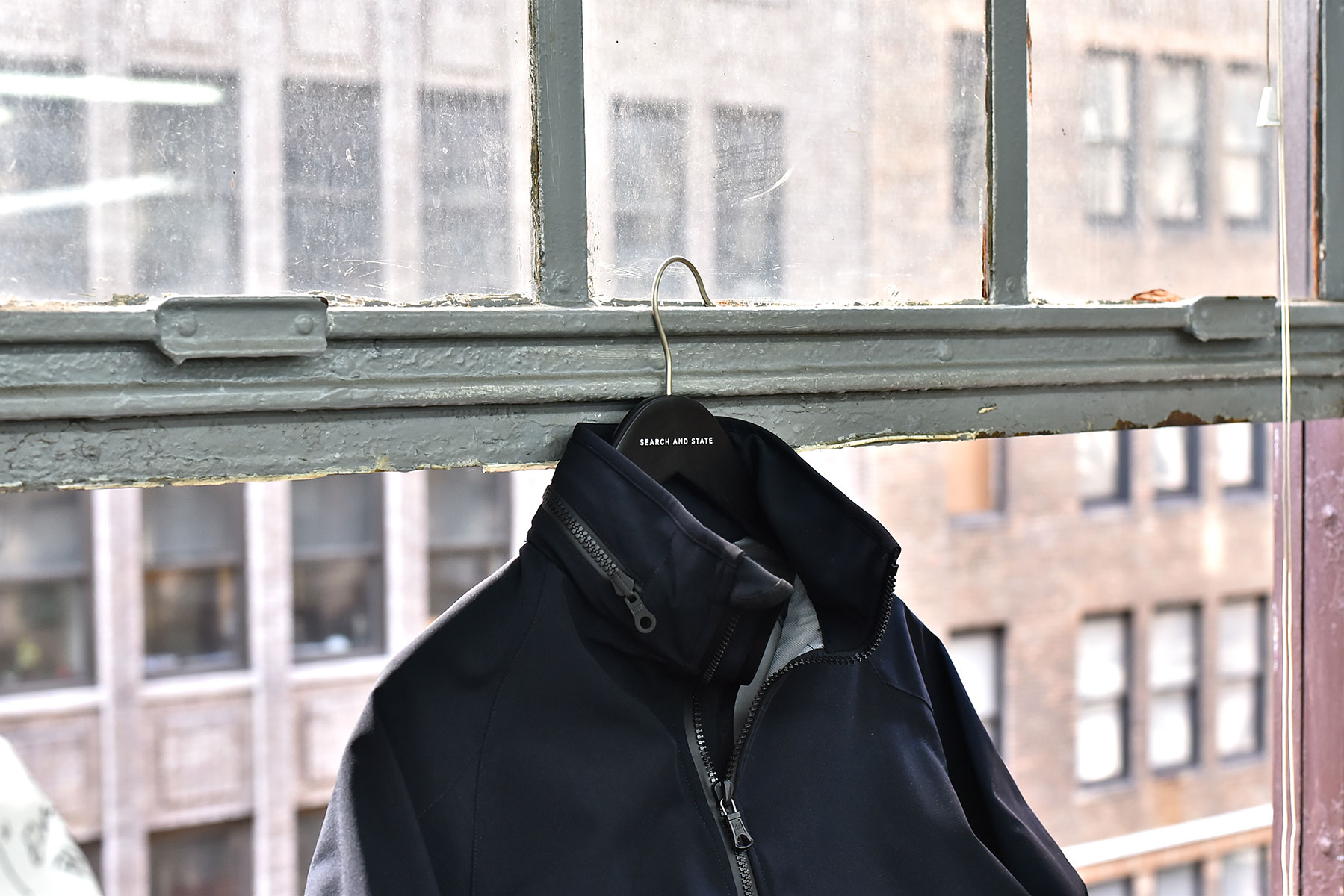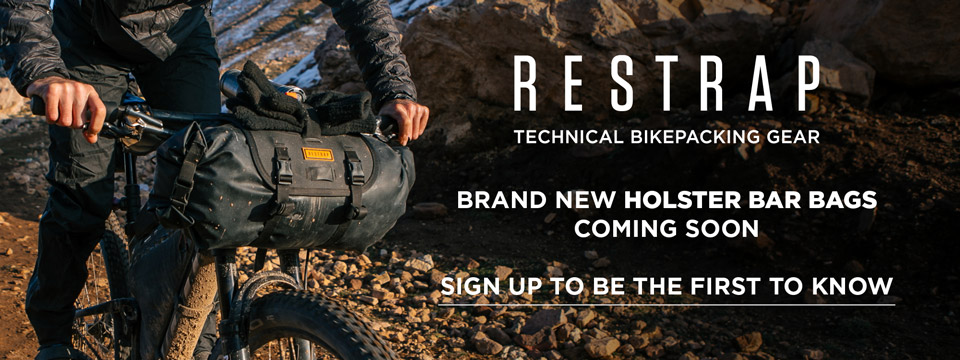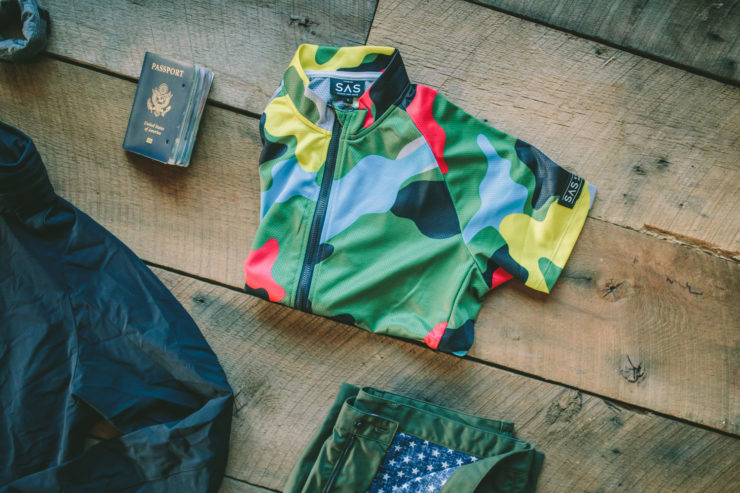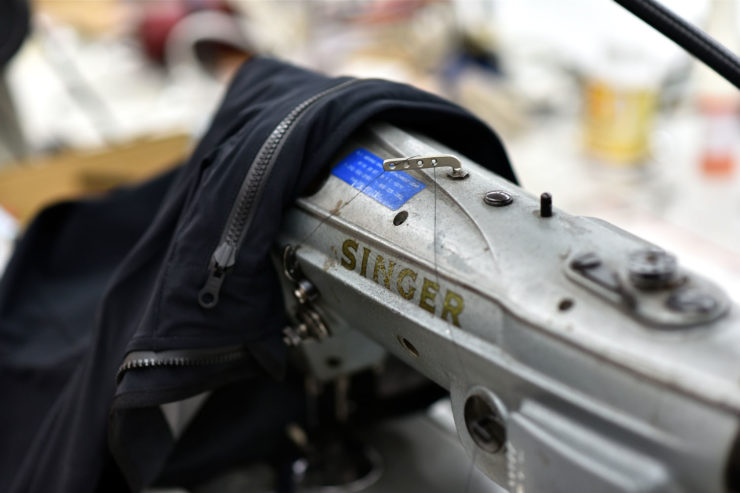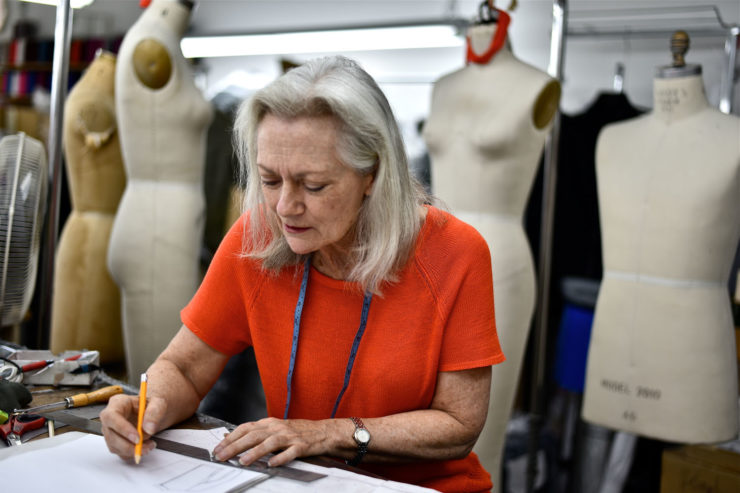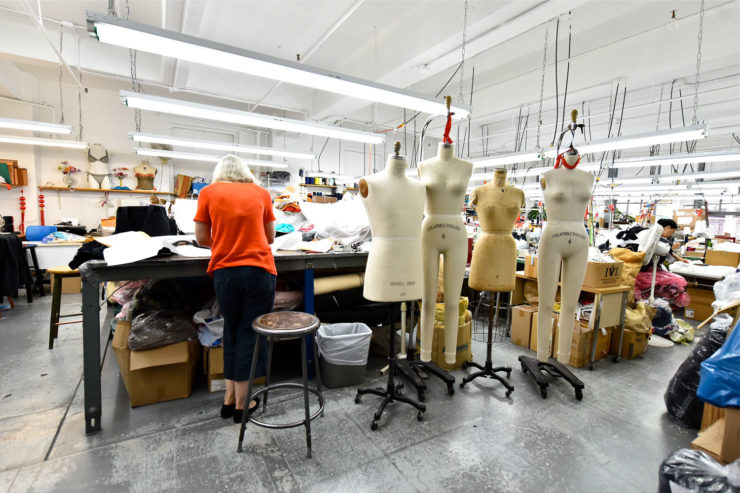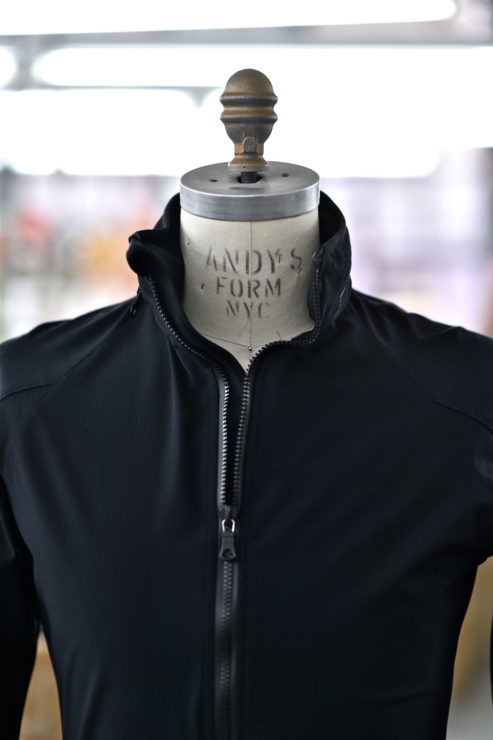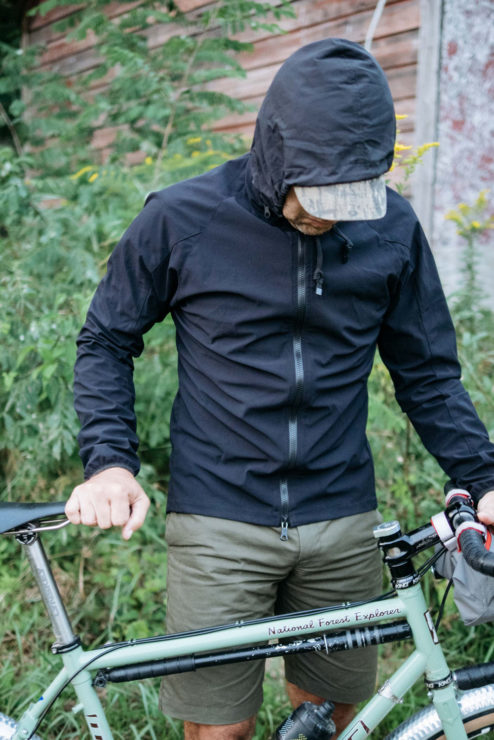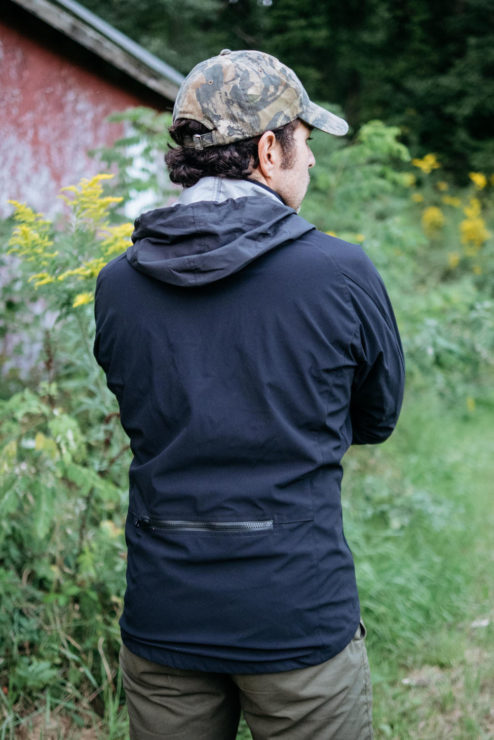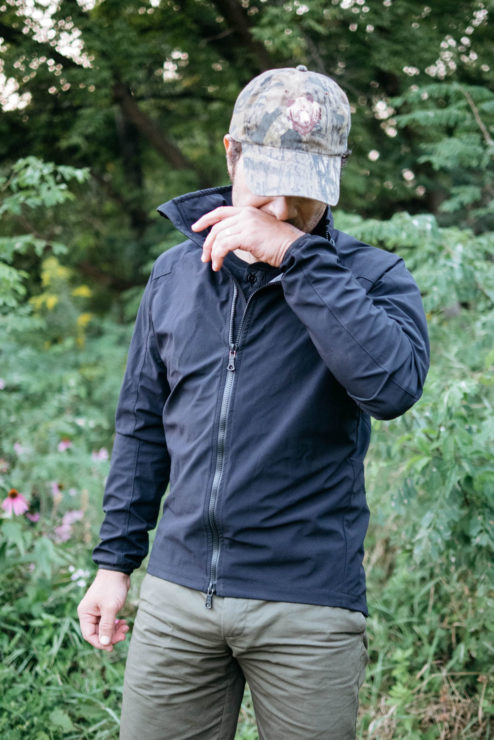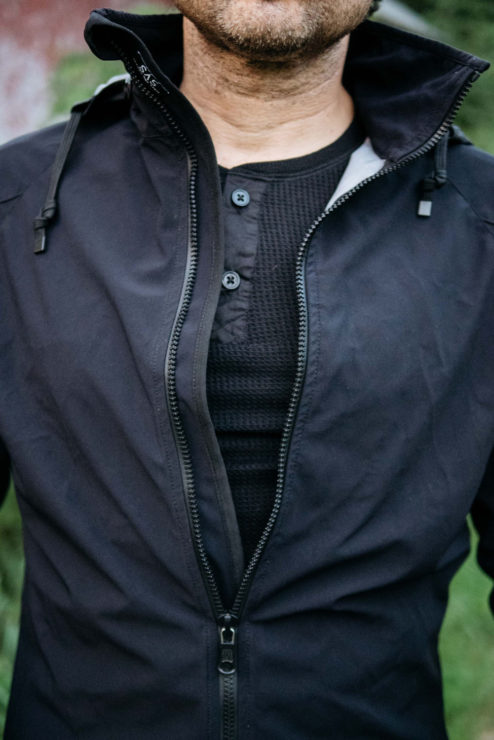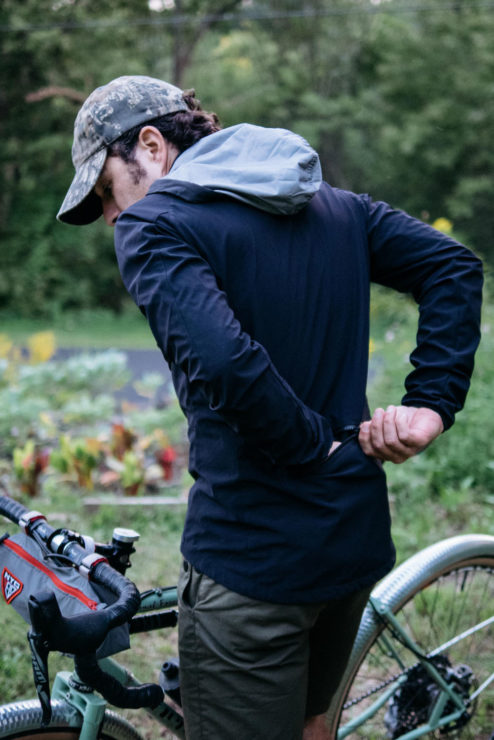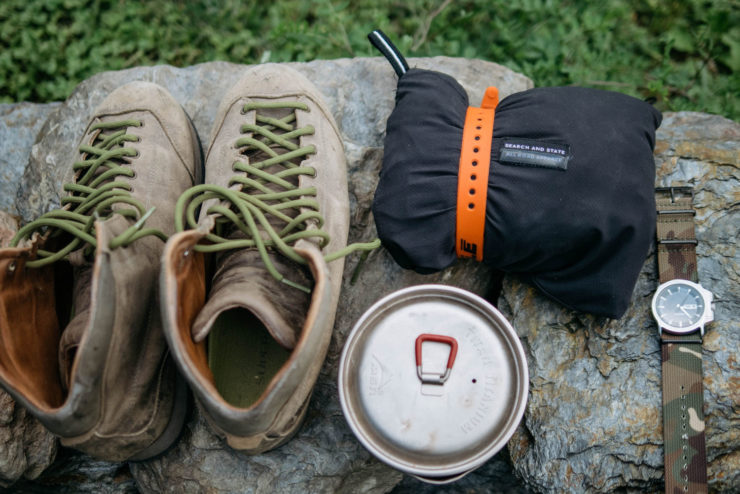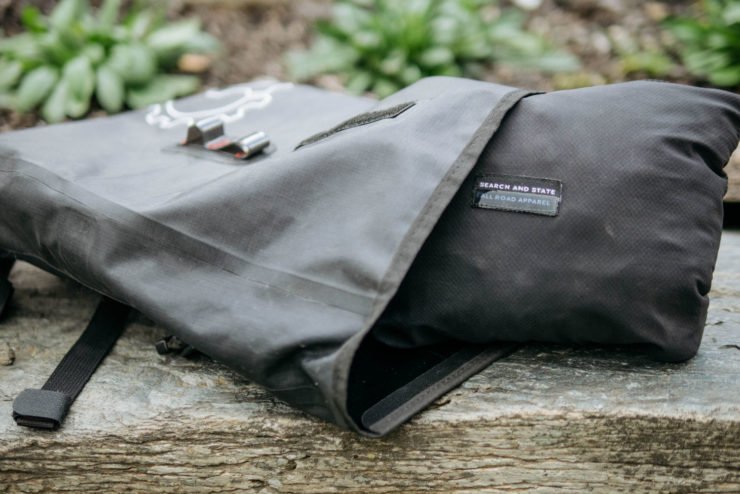Search and State: High Tech from NYC’s Garment District
Search and State makes all of their cycling apparel in New York City’s Garment District. Their early focus was racewear, but adventurous off-the-grid cycling was always in their DNA. They’ve just introduced a jacket conceived specifically for expedition style bikepacking, designed with Joe Cruz as a consultant. Read on to see how he got involved and his eye-opening introduction to made-in-the-USA small batch technical wear.
PUBLISHED Oct 3, 2017
Words by Joe Cruz / photos by Daniel Golden and Margaret Coady
I came across SAS’s first cycling jersey on-line in ‘11. The NYC hook was appealing, and it looked like nice execution. The dimpled fabric had a sophistication and the styling was thankfully otherwise almost plain. I wore that jersey on a trip to Colombia where it kept me feeling cool in both senses, and I came to appreciate the careful tailoring and quality material. Fast forward to now, and I count the crew at Search and State as friends, collaborators, and inspiration.

Search and State originated out of a partnership between Daniel Golden and Devin O’Brien, veterans of the sports apparel industry from the design side and the retail marketing side, respectively, and both serious cyclists. Daniel had a career as a pro motocross racer in his 20’s and Devin has spent big spans of his life in the backwoods as a hunter and champion archer. The idea behind Search and State was to make clothing for cycling but also for the kinds of activities that make aesthetic contact with cycling. You might not have judged it from the polished road kit they initially released, but Daniel and Devin have been riding dirt as long as anyone and have an appetite for adventure. Another core idea behind the brand was to make it all in the USA, with an eye toward sustainability and a commitment to knowing every aspect of the process and supply chain.
I’d made Devin’s acquaintance through a friend, and then I hung out with Daniel in NYC as part of a committed group of riders who don’t mind heading out of town to get to gravel roads up and down the Hudson. To me it’s an amusing misconception that New York City isn’t a friendly place for the adventure set. It’s not Colorado or Alaska, but the density of people and culture—pro photographers, journalist, folks traveling the world as high level participants in their sport—means that there is no shortage of like minded folks, including a very active bikepacking community.
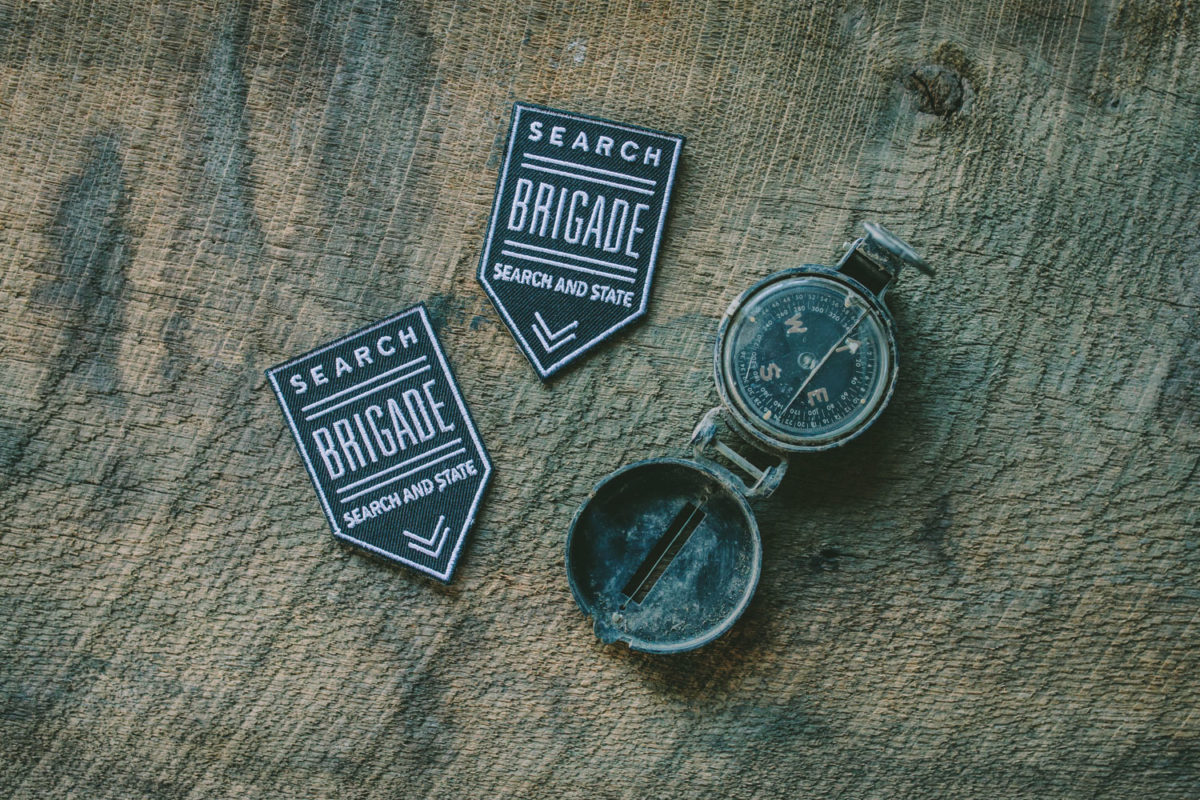
I enjoyed leading the first leg of the inaugural Search Brigade, a group ride across the USA on obscure roads organized by Search and State. The concept was crazy and ambitious: there was an open call on social media for anyone to join up with the Brigade to participate in the ride for as much or as little of it as one liked. The ride wasn’t a guided tour, the ride leaders wouldn’t take care of anyone, there weren’t any rules other than getting along on the road and being able to ride hundred mile days. No one paid to come along, they just showed up and covered their own needs. I admired the experimental anarchy and the emergent coordinated action of it. We set off from Times Square on that initial trip and I got to be better friends with Devin and Daniel, now Daniel and I hang out all the time brainstorming lunatic cycling plans.
At some point over beers he said, “I want to make a kick ass expedition jacket for bikepacking type trips and I want you to be part of it.” I held up my transcendent ignorance as a potential stumbling block: there’s stuff I like, but I hardly know why I like it. He shrugged, “Doesn’t matter, let’s make something.”
For me the next months were an education in the origins of domestically produced technical sportswear. One day early on I climb out of the subway station on 34th Street and walk a few blocks where I’m meeting Daniel. “C’mon, let’s get a cab,” and we tuck into a taxi to the Upper East Side where a fabrics distributor has a showing room on the ninth floor of an ornate Park Ave building. I’m not sure that I had any picture of where we’d look at fabrics, but it definitely wasn’t this. The space is untidy with racks of ready made outdoor gear in every nameable style, mountain shells, vests, mitts, tights. None of it is labeled but I recognize some of the designs. Then there are sheets of fabric arranged like books on a library shelf. The Swiss made product is supplied to dozens of companies in customized colors, weights, textures. Daniel and I dig in, checking each swatch for how small it crumples, how it feels against skin, how it drapes, the sheen, stretch, flexibility.
My head whirls with the variety but Daniel and I are on the same page. We’re not looking for something paper thin just to serve as wind block and rain resistance. This piece should be durable expedition gear, but also not look like a technical jacket. It has to be wearable on a rainy evening heading to a restaurant in Brooklyn, it has to fit close and look refined. We settle on a heavier, drier—in the sense of feeling less synthetic—version of the fabric that SAS use on their wildly successful racing jacket. It’s rated as waterproof and the pores expand and contract depending on temperature. We want the usable range to go to lower temps than shells usually do so as to get away with carrying fewer layers. We want it to pack reasonably small and that’s more important than weight for the kind of bikepacking that I do where it’s space that is at the highest premium. I have an opinion on what color it should be but Daniel invokes the NYC axiom that the first edition will be black. He arranges for a roll to be sent from Europe, it’ll take a couple of weeks.

Daniel has a clear picture — way clearer than I do, certainly — of the design he’s trying to achieve. I think it terms of function. We go from ideas traded over rides and beers to words written down to sketches. For most of my big trips on the bike, I’ve worn jackets that were either from the mountaineering world and therefore had bells and whistles that I’d never need, or were from the cycling world, so were not quite robust enough. Some of my preferences: No handwarmer pockets, since they’re useless on the bike. An under the helmet hood for better vision and close warmth. A snug fitting collar, again for warmth. A simple, inside chest pocket. I mention ventilation, Daniel says that that’s why they spec two way zippers that can be opened from the bottom to let air in. My eyebrows raise, as I’d never thought of it that way and plenty of reviewers of Search and State’s gear who have complained about not having pit zips have missed it. Daniel’s aesthetic is a collision of military, mid-20th century alpine, urban. Branding is minimal, non-black colors orbit around grey, olive drab, navy, bone white. There’s always something interesting going on with texture and the cuts are very intentional. It’s interesting to encounter cycling clothing where graphic design plays virtually no role, but the stretch, the feel of the fabric, the shaping of the panels, the functioning of the zipper are focal. I see all this play out as he reflects on Search and State’s past and future offerings.
The fabric has arrived. I’m invited to meet the pattern maker, Lynne, who’s maybe 60 with flared trousers, white hair in an impossibly hip haircut. Lynne, Daniel and I chat. We get distracted talking about a recent show at the Metropolitan Museum of Art and about the history of architecture. She looks over Daniel’s material, she takes her own notes, she nudges things around, we debate.
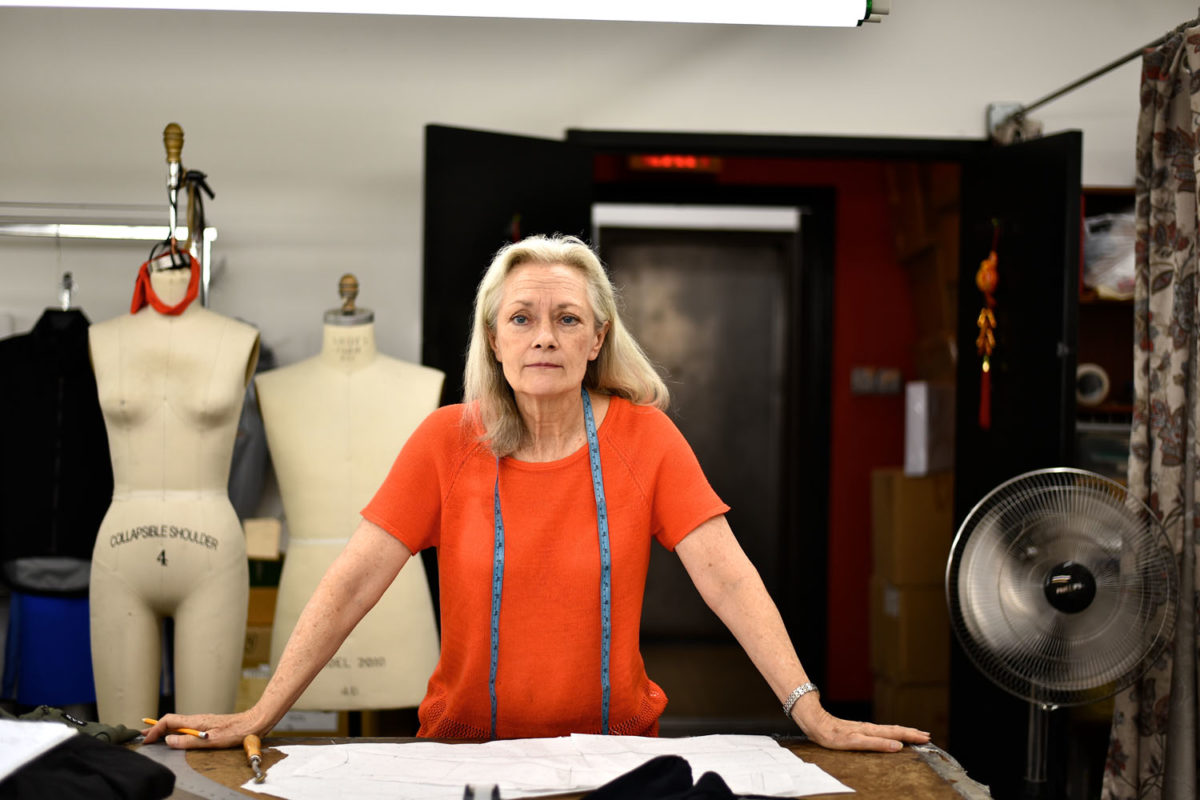
The shapes will get cut and sewn—first into prototypes for us to consider, then the final products—in a traditional New York Garment District sewing room. There used to be hundreds of sewing rooms in the city. They were tucked away into the urbanscape of everything else that happens in Manhattan, so there were rooms on floors of residential buildings, in buildings where you might also find a doctor’s office or an artist’s studio. The concentration of rooms between 35th and 41st streets and enclosed by 5th and 9th took on a crucial role in late 19th century East Coast manufacturing. The technical know how and immigrant labor located there made it one of the world centers for clothing from the 1930’s to the 1970’s. When my dad moved from Puerto Rico to NYC in the 60’s, his first job was ferrying dresses from the Garment District to warehouses in Chelsea; his run would start at a sewing room. Finished pieces would be put on wheeled hanger racks and he’d jog them down the boulevard, not necessarily sticking to the sidewalk, earning a wage that depended on how many racks he delivered in a day. There are far fewer such rooms now with most of such production happening overseas.
Lynne works with Crystal and Eva’s eighth floor sewing room, which specializes in luxe fabrics that stretch. Crystal and Eva used to work for fashion companies that you’ve heard of, then they started their own tiny room, sizing up every few years as they got more clients. They produce sample runs for famous dress designers and women’s underwear brands, but SAS is these days their biggest client, and was one of their first. The room is a rectangle maybe the size of a high school classroom. There are a dozen sewing machines, fluorescent lighting above. There are cutting tables, a steam machine, bolts of fabric filling every angle and corner. It seems an impossible mess, but in a few weeks I’m better able to read its logic. It’s not loud but it’s not quiet, the mood is unheavy but people are focused. Crystal and Eva commute from Queens, they put their kids through school with the income from this room. They own the equipment, they rent the space, and the people in the room work for them. I see The City in the women—they’re all women—sewing in this room.
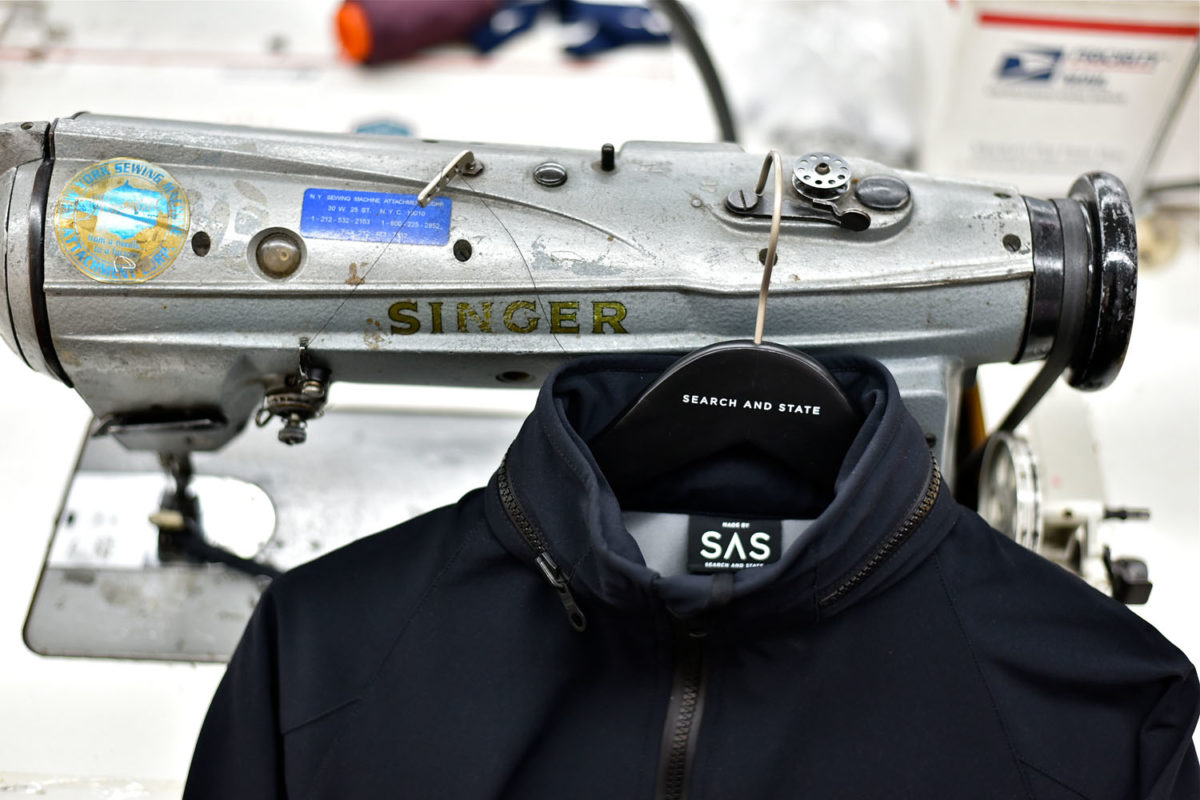
Over the coming months I’ll find out that different people have different expertise. To sew the complicated jacket collar everyone will send every piece to a particular woman who is good at it, then they’ll take the piece back and continue. Then there’s the woman they call “grandma,” never anything else. Every single step starting from unrolling the fabric to putting the finished items in a box to ship to Devin in Minneapolis where SAS has their packaging and distribution, every single step gets done in this room by one of these people. The buttons are sewn on, the SAS label is attached, the garment is steamed to remove wrinkles, the threads are trimmed. Every piece gets looked at by a dozen eyes, and Daniel is often there to look at the pieces, too, but also to joke around, to trade news about who in the room has a birthday, to help pack boxes, to get yelled at by Crystal for not clearing out the latest batch fast enough. There’s no feeling that someone is the boss. What I see are people who know what they’re doing, know when to do it, and who respect each other.
Daniel comes to the Garment District by train, walks a few streets. He and Kelly, Search and State’s production assistant, move through a world with a four block footprint. There are no parking lots, there’s no loading dock, there is no warehouse. Motion is up and down elevators with a hand truck. The labels get embroidered around the corner, the cardboard SAS tags printed across the street.
We meet up to try the prototype on. Stray stitching and rough seams, the zipper isn’t yet the top drawer sublime waterproof Riri one that will be on the final product, the hood drawstring is just a shoelace. But the piece is brimming with what it will be, and I marvel. Daniel wants the waist a little longer and a little more room at the top opening when the zipper is fully closed. We go back and forth on the size of the arm holes. I want the hood to be less, um, pointy. Lynne asks about the shoulders, Daniel scans left right left, “no, that’s good.” Daniel’s been doing this for so long that it seems like his vision works at five times the speed of mine. I don’t know what he saw.
Another week Daniel texts me to ask if I can visit some shops that specialize in trim and finishing to pick out candidate drawstring ends and drawstring. The shops are clustered nearby, the kind of storefronts that three months ago would have been completely invisible to me, just part of the set design of Midtown. I spend an hour and a half looking at different cordage. I dip possibilities in water to see how saturated they get. I tie knots as tight as I can to see how hard it is to untie them. The finishing shop is like a demented archive, shelves of clear boxes to the ceiling. I push the ladder around to get to the high up items. I’m surrounded by people of all ages and I wonder what they’re doing. Some are Fashion Institute of Technology students, it’s close by, and that’s where Daniel studied. Some are hobbyists, maybe. Others are designers who are creating samples of items that will be sewn in rooms like Crystal and Eva’s.
For me it would be disingenuous to be overly preachy about it. My closet is filled with clothing made in China, India, Mexico, Vietnam. I have a bunch of bikes with frames made in the USA, but many of the parts aren’t. There’s immense expertise and knowhow overseas when it comes to clothing manufacture, as well as the most cutting edge technologies. Yes, I think consumers, myself included, should think more about the conditions of overseas workers and about the relationship between the low retail prices we pay and who’s getting rich or not. But global economics is complicated and only some of the moral dimensions are clear.
I can say, though, that it means something to me that Search and State produces every single item in their catalog in the USA, often with USA sourced material. Why does it mean something? Well, it lifts me that all the makers in Crystal and Eva’s room do something that they’re respected for and good at, can live a decent life in a relatively expensive urban area, can look after their families, can take vacations. It means something because they’re my neighbors, they’re who I ride the subway with. My dad has passed away, but many of the women in the room are the age that he would be, and having meaningful work is important for an identity.
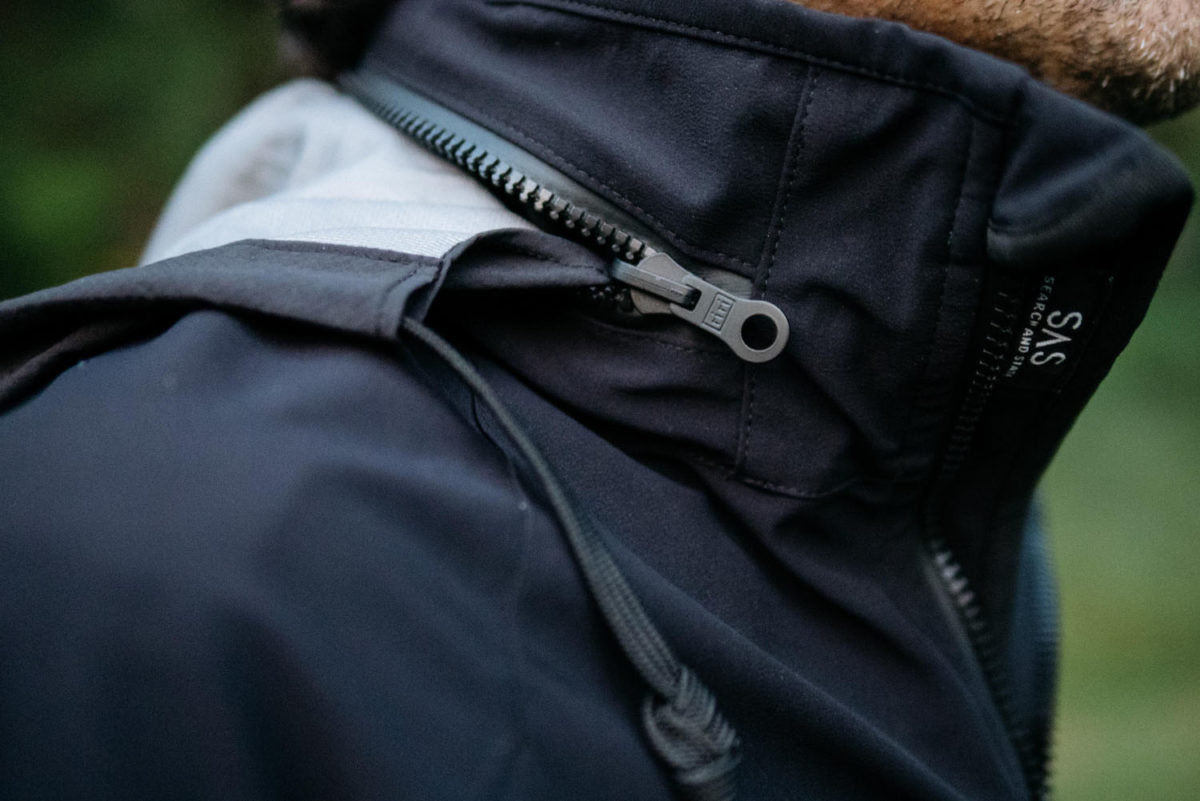
More abstractly, I think that if the idea of making things gets too far away from our cultural imagination — if we think of everything that’s made as coming from somewhere else — well then I think we lose the knowledge that consumption isn’t just about clicking a button to buy. It’s about the process of concrete, finite resources being turned around in the hands of real life human beings.
Daniel calls me to come try on one of the production jackets. I pull it on and zip it up in spite of the midsummer temps. He says he’s been wearing his all the rainy weekend and I can tell he’s excited. I smile, I’m excited too, time to plan a trip. I hope that when I’m way off the beaten track somewhere and zip up this jacket against sideways freezing rain, when I batten down the hood and get back on the bike, I hope that right then I think about the people who made it.
To learn more about the PJ-1 Jacket, click here. Also, check out their other made in NYC adventure-ready apparel including the Long Sleeve Merino Jersey and the waxed-canvas Field Shorts.
Please keep the conversation civil, constructive, and inclusive, or your comment will be removed.







